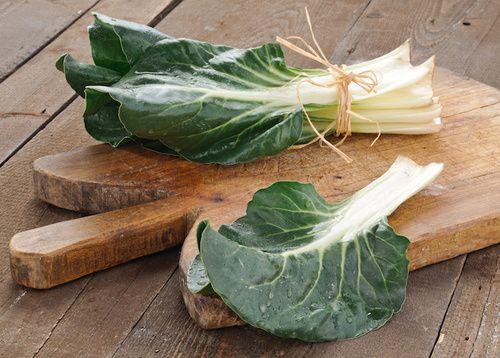The coasts, or beets from the coast, are vegetables with known re-mineralizing properties, very useful for the health of the intestine, skin, bones and eyes. Let's find out better
> 2. Properties and benefits of the coasts
> 3. Calories and nutritional values of the coasts
> 4. Allied with
> 5. Curiosities on the coasts
> 6. A recipe with ribs

Description of the plant
The common name of this vegetable is chard or coast. Beta vulgaris L. var. vulgaris, on the other hand, is the scientific name of the plant, which belongs to the Chenopodiace family.
Chard from the coast, or ribs, both the leaves and the leaf ribs are consumed, that is the lighter part, the one in which the leaves end and the ribs begin. It is a vegetable that is widespread throughout the country, but the cultivation is practiced above all in the South, in particular in Puglia, Tuscany, Veneto and Lazio.
Chard go bought and consumed very fresh as they tend to wither quickly.
Properties and benefits of the coasts
Le coste they are present on the market for most of the year and are especially appreciated for richness of mineral salts; in fact, they contain a good amount of sodium, magnesium, potassium and calcium.
The content of vitamins is also good, in particular provitamin A or beta-carotene, essential for the good health of eyes, skin and fabrics. Thanks to its remineralizing properties it is also recommended in case of anemia e asthenia.
The coasts, moreover, are refreshing, emollient and laxative. They are easily digestible and, due to all these properties, they are also particularly suitable for feeding children, the elderly and pregnant women.
They have a very limited calorie content and are therefore very useful in weight loss diets. Finally, the chard contains oxalic acid, a substance that is used for good bone health.
Calories and nutritional values of the coasts
100 g of raw ribs contain 17 kcal / 71 kj, while the same weight of boiled ribs contains 36 kcal / 150 kj
Furthermore, for 100 g of product we have:
- Water 89,30g
- Carbohydrates 2,80g
- Sugar 2,80g
- Protein 1,30g
- Fats 0,10g
- Total fiber 1,20g
- Sodium 10mg
- Potassium 196mg
- Iron 1mg
- Calcium 67mg
- Phosphorus 29mg
- Magnesium 38mg
- Zinc 0,78mg
- Copper 0,16mg
- Vitamin B1 0,03mg
- Vitamin B2 0,19mg
- Vitamin B3 1,80mg
- Vitamin A 263µg
- Vitamin C 24mg
Coasts, allied to
Leather, eyes, intestines, bones.
Curiosities on the coasts
All currently grown beets probably derive from wild chard, typical of the Mediterranean area. The enormous differentiation between the various types of beets is due to the selection made over time by man; In addition to the original wild beet, there were thus fodder beets, sugar beets and garden beets, which are divided, in turn, into beets and beets from the coast or coast.
A recipe up your sleeve
The ribs are excellent for preparing side dishes, quiches or savory pies. Try cooking it following this simple recipe.
Ingredients:
- ribs,
- Cherry tomatoes,
- garlic,
- extra virgin olive oil,
- Pine nuts,
- raisins.
Method: after having carefully washed the ribs, blanch them in salted water and drain them. In a pan, sauté a clove of garlic. Remove the garlic and cook a few tomatoes cut in two in the oil. When the tomatoes have reached the desired cooking, add the chard, the raisins (previously soaked and squeezed) and the pine nuts. Sauté everything in a pan and serve.
Discover also the properties, calories and nutritional values of beets


























